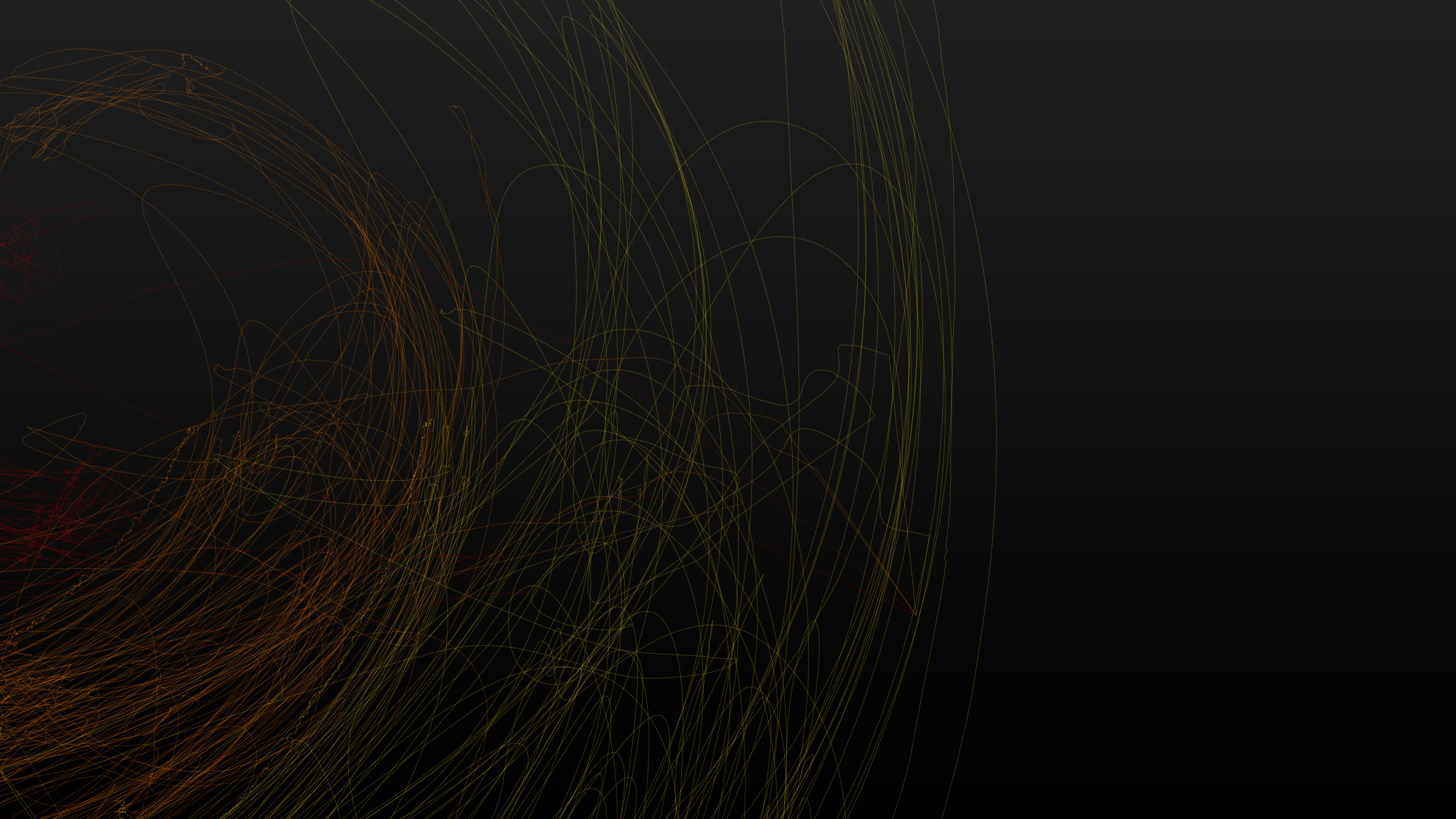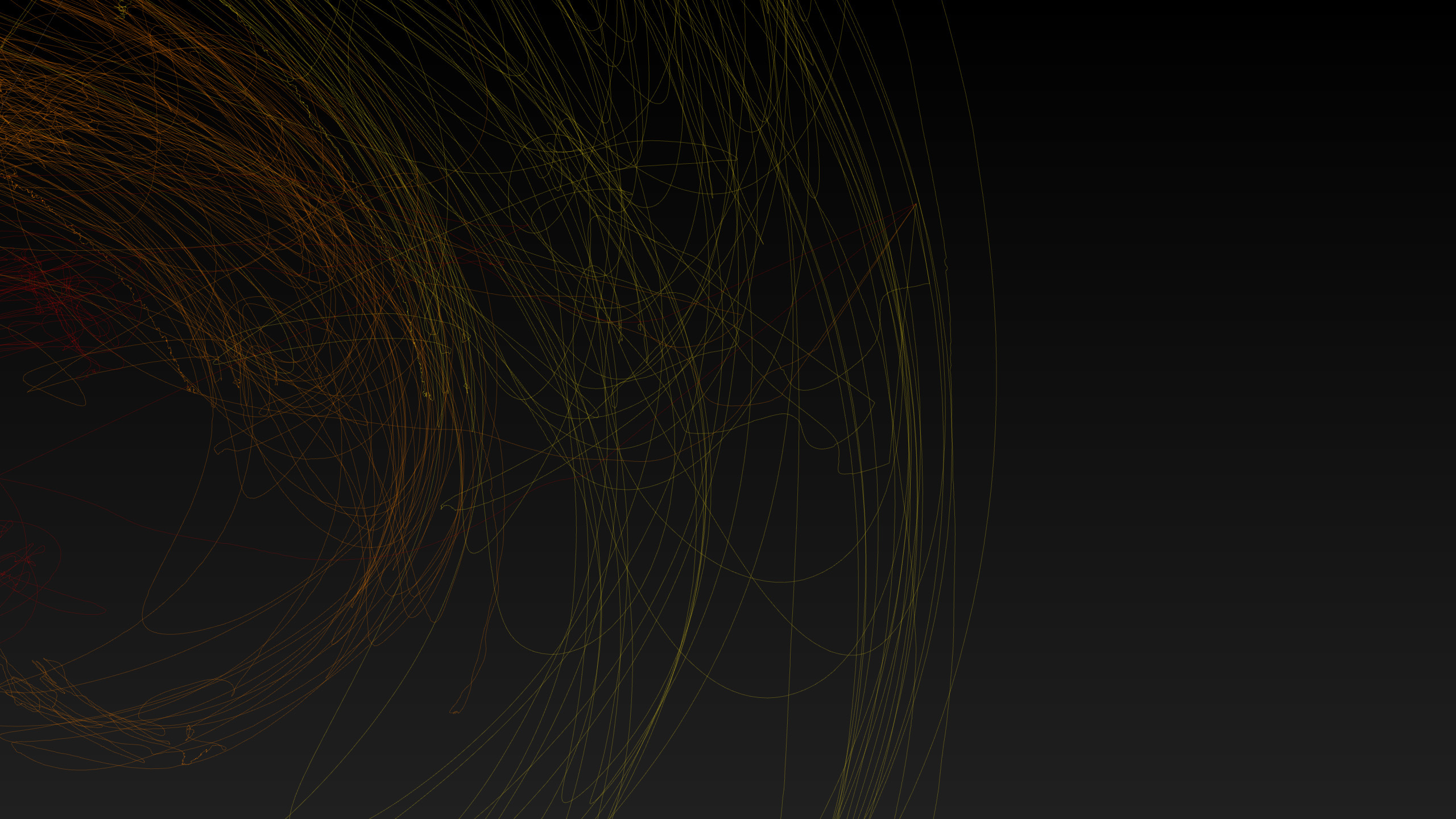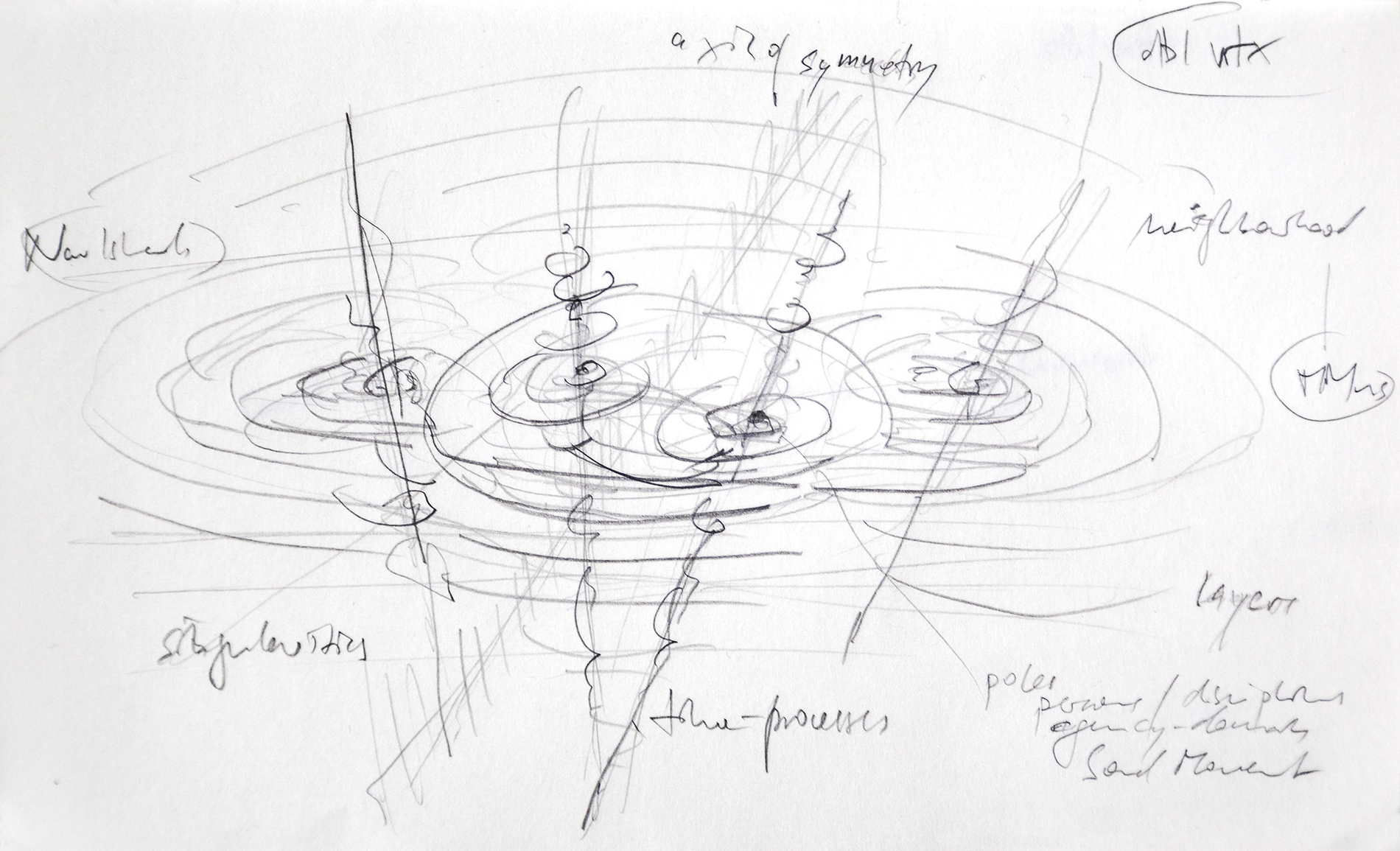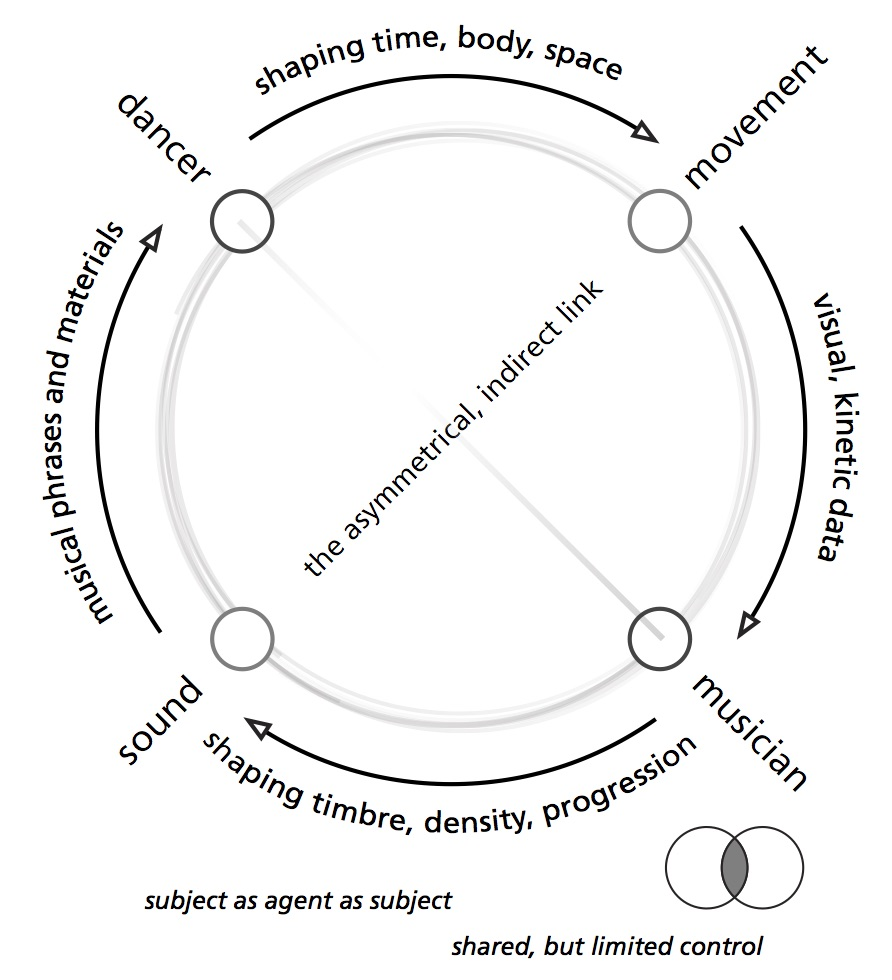Using the two pieces Double Vortex and Moving Music as concrete examples, this exposition explores issues of impact and affect of movement in combination with sound, and how the mixture of methods deployed in this project constitute a process of research through artistic practice. By laying out perspectives, traces, and reflections that cover the development and performance of both pieces, a tentative map or web of relationships is revealed with the intent of generating insight and understanding about this particular kind of performing art.
This exposition is organised in different sections. They cover methods of creation, development processes and performance, comparisons of the central pieces of this article, observations from a non-artist’s perspective on the different workflows and processes, and higher-level reflections on the import and significance of weaving a second layer of discursive, yet loose assemblages of elements.
The specific question this project poses concerns the meaning and impact of, on the one hand, performing – possibly silent – movements in music and, on the other hand, generating music with movement through dance actions. How does a musician’s corporeality, presence, and movements influence, colour, and charge a musical performance; in other words, what effect does the embodied presence have on musical performances? Conversely, the question concerning the dancer is how musical principles that govern timing, density, and polyphony are also active in movement performance and perception.
Merleau-Ponty’s poetic image of the ‘two circles, or two vortexes, or two spheres, concentric’ resonates strongly with this project. Quite a few slightly shifted yet almost concentric elements are tied, linked, mapped together, juxtaposed, superposed, or co-performed. In the context of his argumentation, Merleau-Ponty may address the inherent duality of seer and seen. For us, the concept may as well apply to physical presence and performative actions, and to the supposed fixity of a ‘work’, even if it merely exists as a short-duration and ephemeral coming together of people, intentions, and accumulated experiences, brought into a compact time frame and a well-defined space for the sake of convention.
This is a shift in focus from a specific to a fluid and ever-shifting state. The underlying artistic space and process is a domain that exists not only in performance, nor in the documentation, nor exclusively in experiences; instead, it is an assemblage of all the elements and for each person takes on a different shape. The two states in question repeat, double up, and resonate across two works, two disciplines, two performers, and two observers. Like Artaud’s shadowy double of theatre, the plague, and cruelty (see Artaud 2010), movement and sound, bodies and instruments, and technology and experiences form dualities and pairs that are inextricably intertwined and interdependent.
Performing with live-electronics and gestures is an established practice that dates back to the first electronic music decade, the 1960s, as seen for example in Stockhausen’s Solo begun in 1964 (Esler 2006). A qualitative shift occurred with the advent of computer-based live-signal processing, for example with Boulez’s Répons (1981), which built on the era’s highest performing musical computing available (Casserley 1993). Pioneering the use of gestural controllers at institutions such as STEIM (http://steim.org/), Michel Waisvisz (1985, 1999) paved the way for practices by performers such as Laetitia Sonami (1991), Atau Tanaka (2000), and Sergi Jordá Puig (2005).
Mixing dance and analytical methods dates back to the early twentieth century with Laban’s movement notation (Laban 2011; Maletic 1987), which was followed by the choreographic translation strategies of Mary Wigman, Martha Graham, and Merce Cunningham (Reynolds 2007), Steve Paxton’s Material from the Spine (2008), William Forsythe’s synchronous objects (Shaw 2011), and Wayne McGregor’s collaborations with neuroscientists (Kirsh 2010) and dance researchers (deLahunta, McGregor, and Blackwell 2004). Interactive dance in the narrower sense begins with real-time-capable computer systems in the 1990s. Early in this field is David Rokeby’s (1995) Very Nervous System (VNS). Since the 1990s dance makers have explored interactive dance (Siegel and Jacobsen 1998; Bevilacqua, Schnell, and Alaoui 2011) and carried out research for archival and dissemination purposes (Bermúdez et al. 2011; deLahunta 2013; deLahunta and Bermúdez Pascual 2013).
Even though the modes of performing in this project conform to conventional stage settings, the shape of the works resonates with contemporary theatre. However, the orientation is deliberately non-theatrical and owes more to the théâtre musical tradition (Aperghis 1990; Gindt 1990) and the general concept of ‘musicking’ (Small 1999) as an overarching cultural technique than to specific issues originating from performance theory (Schechner 1988) or theatre studies (Birringer 1991; Lehman 2006; Rebstock and Roesner 2012).1
The particular position taken up in this project focuses on a discipline-crossing exploration between sound and movement. The specific question this project poses concerns the meaning and impact of, on the one hand, performing – possibly silent – movements in music and, on the other hand, generating music with movement through dance actions. In the mirrored configurations of the two pieces, through their reciprocal dependency, a number of underlying principles of movement and sound performance become visible. Thus phrasing, co-phrasing, co-articulating, and the handling of time units through these actions can be attributed to bodily dimensions, speeds, and energies. The resonance of bodily action in the perceptual space and through it the influence of gestures and movement phrases on musical density becomes perceivable.
The intention of this exposition is to explore methods for mapping out materials and reflections and gathering understanding about assembling traces and elements of both an artistic development process and a set of compact performance pieces. By doing this both from a subjective point of view and from an outside observer position, an overlapping field of signification is generated.
The shift in significance through working with embodied presence is one that moves away from the material towards the changed quality of performance. It takes an increased level of knowledge and sensitisation to these issues to perceive and recognise the effects this has in the two pieces. Depending on the familiarity with the idiom, other aspects, such as sound materials or the use of space, may come to the foreground for a viewer.
The question whether the socio-political situation can be addressed by working in a black-box environment is a difficult, ethical question (Cobussen and Nielsen 2012) for all performing arts. In this practice we are tributaries to many cultural norms and socio-economical power relations. Obtaining access to a proper theatrical space and performing work that stretches its boundaries already depends on and exposes the artist’s status within society. Embedding this practice in extended forms of communications such as sharing experience in workshops and intercultural encounters potentially generates a different social meaning.
Choosing the concert format eliminates some of the pressure of having to redefine the frame as well as the content of an artistic work. At the same time, it provides the audience with an already established frame of expectations and experiences, which is essential to measure their experience against. Removing the known frame of reference or situating the works in a completely different frame of reference brings questions to the foreground that may not have been the topic of the artistic work. One definite effect of situating the work in the conventional stage context is that the two pieces are compared with more traditional forms of music and dance. Since some of the inner relationships and interactions are unknown to the public, the pieces are challenging to understand. Communicating the intentions and ideas of the pieces to the audience before the performance helps alleviate this problem.
Finally, a large topic in itself, the use of technology is thematised here only insofar as it affects the agency of the performers and serves as a substrate for the corporeal performance. Addressing the significance of wearable technology in this context means asking questions about control and interdependence, as shown in the quotation by Suzan Kozel (2007: 271) and as illustrated in the symmetries graphic from Moving Music.
‘But my seeing body subtends the visible body, and all the visibles with it. There is a reciprocal insertion and intertwining of one in the other. Or rather, if, as once again we must, we eschew the thinking by planes and perspectives, there are two circles, or two vortexes, or two spheres, concentric when I live naïvely, and as soon as I question myself, the one slightly decentred with respect to the other.’ (Merlau-Ponty 1968: 138)
Moving Music: symmetries, asymmetries, and mediated indirect links in the relationship between dancer, sound, musician, and movement (click to enlarge).
The impossibility ever of fully grasping complexity in art might be exemplified in a reflection Smithson makes about ‘mapscapes or carthographc sites’ in relation to an abstract idea of minimal space. Although Smithson’s central works are in the domain of land art and his writing about the ‘mapscape’ is concerned with the fascination with actual representational maps, what is interesting in his reflection about Fuller’s ‘dot’ is the realisation that it cannot be fixed or tied down, its centre is unreachable. In a sense the ‘infinite expanse of spheres of energy’ correlates with the compressed, singular moment of performance, where the ‘concentration or dilation’ is a characteristic of the intangibility of the moment onstage, and the attempt at grasping and trying to generate understanding may lead to actual ‘vertigo’ and being hurled ‘to the outer edge’.
‘The use Fuller makes of the “dot” is in a sense a concentration or dilation of an infinite expanse of spheres of energy. The “dot” has its rim and middle, and could be related to Reinhardt’s mandala, Judd’s “device” of the specific and general, or Pascal’s universe of center and circumference. Yet, the dot evades our capacity to find its center. Where is the central point, axis, pole, dominant interest, fixed position, absolute structure, or decided goal? The mind is always being hurled towards the outer edge into intractable trajectories that lead to vertigo.’ (Smithson 1996: 94)




